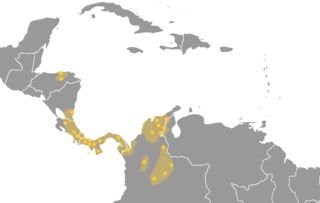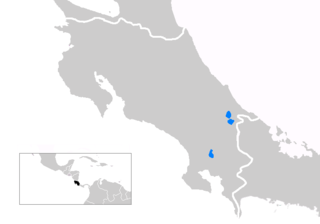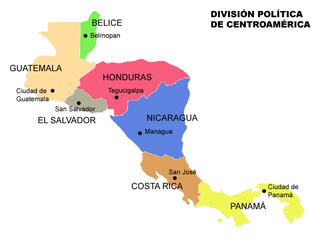
The Chibchan languages make up a language family indigenous to the Isthmo-Colombian Area, which extends from eastern Honduras to northern Colombia and includes populations of these countries as well as Nicaragua, Costa Rica, and Panama. The name is derived from the name of an extinct language called Chibcha or Muysccubun, once spoken by the people who lived on the Altiplano Cundiboyacense of which the city of Bogotá was the southern capital at the time of the Spanish Conquista. However, genetic and linguistic data now indicate that the original heart of Chibchan languages and Chibchan-speaking peoples might not have been in Colombia, but in the area of the Costa Rica-Panama border, where the greatest variety of Chibchan languages has been identified.

Costa Rican culture has been heavily influenced by Spanish culture ever since the Spanish colonization of the Americas including the territory which today forms Costa Rica. Parts of the country have other strong cultural influences, including the Caribbean province of Limón and the Cordillera de Talamanca which are influenced by Jamaican immigrants and indigenous native people, respectively.

Limón is one of seven provinces in Costa Rica. The province covers an area of 9,189 km2, and has a population of 386,862.

Monteverde is the twelfth canton of the Puntarenas province of Costa Rica. It is located in the Cordillera de Tilarán mountain range. Roughly a four-hour drive from the Central Valley, Monteverde is one of the country's major ecotourism destinations. The area is host to the Monteverde Cloud Forest Reserve and several other natural attractions, which draw considerable numbers of tourists and naturalists.

The Isthmo-Colombian Area is defined as a cultural area encompassing those territories occupied predominantly by speakers of the Chibchan languages at the time of European contact. It includes portions of the Central American isthmus like eastern El Salvador, eastern Honduras, Caribbean Nicaragua, Costa Rica, Panama, and northern Colombia.

The Bribri are an Indigenous people in eastern Costa Rica and northern Panama. Today, most Bribri people speak the Bribri language or Spanish.

Central America is a subregion of the Americas formed by six Latin American countries and one (officially) Anglo-American country, Belize. As an isthmus it connects South America with the remainder of mainland North America, and comprises the following countries : Belize, Guatemala, Honduras, El Salvador, Nicaragua, Costa Rica, and Panama.
The Maléku Jaíka language, also called Malecu, Maleku, Guatuso, Watuso-Wétar, and Guetar, is an Indigenous American language in Costa Rica.

Bribri, also known as Bri-bri, Bribriwak, and Bribri-wak, is a Chibchan language, from a language family indigenous to the Isthmo-Colombian Area, which extends from eastern Honduras to northern Colombia and includes populations of those countries as well as Nicaragua, Costa Rica, and Panama. As of 2002, there were about 11,000 speakers left. An estimate by the National Census of Costa Rica in 2011 found that Bribri is currently spoken by 54.7% of the 12,785 Bribri people, about 7,000 individuals. It is a tonal language whose word order is subject–object–verb.

The Spanish conquest of the Chibchan nations refers to the conquest by the Spanish monarchy of the Chibcha language-speaking nations, mainly the Muisca and Tairona that inhabited present-day Colombia, beginning the Spanish colonization of the Americas.

Christianity is the predominant religion in Costa Rica, with Protestantism being its largest denomination. Catholicism is also the state religion, but the government generally upholds people's religious freedom in practice.
Chinese people have been immigrating to Costa Rica since the mid-nineteenth century. They come from The People's Republic of China, and from Taiwan. The Sino-Costa Rican community is of great cultural, economic and social importance. It is one of the main Chinese communities in America, in the Caribbean Basin it is only surpassed by that of Panama, with around 9,000 citizens living in the country.
The Cabécar language is an indigenous American language of the Chibchan language family spoken by the Cabécar people in the inland Turrialba Region, Cartago Province, Costa Rica. As of 2007, 2,000 speakers were monolingual. It is the only indigenous language in Costa Rica with monolingual adults. The language is also known by its dialect names Chirripó, Estrella, Telire, and Ujarrás.

Italian Costa Ricans are Costa Rican-born citizens who are fully or partially of Italian descent, whose ancestors were Italians who emigrated to Costa Rica during the Italian diaspora, or Italian-born people in Costa Rica. Most of them reside in San Vito, the capital city of the Coto Brus Canton. Both Italians and their descendants are referred to in the country as tútiles. There were over 380,000 Costa Ricans of Italian descent, corresponding to about 7.5% of Costa Rica's population, while there were around 2,300 Italian citizens.

Indigenous people of Costa Rica, or Native Costa Ricans, are the people who lived in what is now Costa Rica prior to European and African contact and the descendants of those peoples. About 114,000 indigenous people live in the country, comprising 2.4% of the total population. Indigenous Costa Ricans strive to keep their cultural traditions and languages alive.

Costa Ricans are the citizens of Costa Rica, a multiethnic, Spanish-speaking nation in Central America. Costa Ricans are predominantly Castizos, other ethnic groups people of Indigenous, European, African and Asian descent.
At the 2011 census, the number of immigrants in Costa Rica totaled about 390,000 individuals, or about 9% of the country's population. Following a considerable drop from 1950 through 1980, immigration to Costa Rica has increased in recent decades.

The Cabécar are an indigenous group of the remote Talamanca region of eastern Costa Rica. They speak Cabécar, a language belonging to the Chibchan language family of the Isthmo-Colombian Area of lower Central America and northwestern Colombia. According to census data from the National Institute of Statistics and Census of Costa Rica, the Cabécar are the largest indigenous group in Costa Rica with a population of nearly 17,000.

According to Costa Rica’s 1977 Indigenous Law, the Indigenous Territories are the traditional lands of the legally recognized indigenous peoples of Costa Rica. The Republic of Costa Rica recognizes eight native ethnicities; Bribris, Chorotegas, Malekus, Ngöbe, Huetars, Cabecars, Borucas and Terrabas.
The Bribri Talamanca Indigenous Territory is one of the four Costa Rican indigenous territories of the Bribri ethnic group. It borders the Talamanca Cabecar Indigenous Territory. It was created by decree in 1985 and is located in the canton of Talamanca, Limón Province. It covers an approximate area of 43,690 hectares of a predominantly mountainous area.













